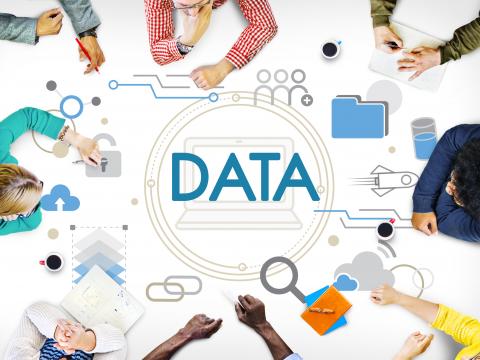The Imperative Role of Data Collection and Analysis in Combating Bullying’s

Combating Bullying through Data Collection and Analysis
Bullying, a pernicious scourge that casts a long shadow over countless young lives, demands the utmost vigilance and unwavering commitment to eradicate it. At the heart of this battle lies the crucial role of data collection and analysis, a vital tool in comprehending the complexities of this insidious problem and crafting effective strategies to vanquish it Illuminating the Darkness
Data collection forms the cornerstone of any comprehensive anti-bullying campaign. It enables us to uncover the hidden patterns and dynamics that fuel this epidemic. Through meticulous gathering of information on incidents, perpetrators, victims, and witnesses, we can paint a detailed portrait of bullying’s prevalence, nature, and impact. This invaluable data serves as a guiding light, illuminating the shadowy corners where bullying thrives.
By data collection analyzing incident reports, schools and organizations can pinpoint specific hotspots and high-risk environments. They can identify the most common forms of bullying, whether physical, verbal, or cybernetic. They can delve into the motivations of bullies and the vulnerabilities of victims, revealing the underlying factors that perpetuate this cycle of torment.
Moreover, data collection empowers us to track the effectiveness of anti-bullying interventions over time. By monitoring key metrics such as reported incidents, suspensions, and student surveys, we can assess the impact of our efforts and make necessary adjustments to ensure maximum efficacy. Analysis: From Data to Insight
Once data is collected, the analytical process transforms raw numbers into actionable insights. Statistical analysis helps us identify trends, patterns, and correlations that might otherwise remain hidden. We can uncover the risk factors associated with bullying, such as socioeconomic status, academic performance, or family environment.
Disaggregating data by demographic characteristics allows us to pinpoint specific groups of students who are disproportionately affected by bullying. This knowledge enables us to tailor interventions to address the unique needs of different populations. For instance, we might implement targeted programs for LGBTQ+ students or students with disabilities, who are often at higher risk of victimization.
Advanced analytical techniques, such as machine learning algorithms, can further enhance our understanding of bullying by identifying complex patterns and predicting future incidents. By leveraging data collection to its fullest potential, we can anticipate and proactively address the problem before it spirals out of control. The Call to Action
The importance of data collection and analysis in addressing bullying cannot be overstated. It is the indispensable foundation upon which we can build effective strategies to combat this scourge. By relentlessly gathering and analyzing data, we can illuminate the darkness, unravel the complexities, and empower ourselves to create a world where bullying is relegated to the annals of history
Let us not hesitate to embrace this challenge with unwavering determination. Let us harness the power of data collection to expose the perpetrators, protect the victims, and heal the wounds inflicted by bullying. Together, we can shatter the silence and forge a society where all young people can thrive in an environment free from fear and humiliation.
Data Collection for Reportbullying.com

Purpose: To gather comprehensive data on bullying incidents and experiences to inform prevention, intervention, and policy development.
Methods:
- Online Surveys:
- Conduct anonymous surveys targeting students, parents, teachers, and administrators.
- Collect data on the prevalence, types, and impact of bullying.
- Assess perceptions and attitudes towards bullying.
- Focus Groups and Interviews:
- Facilitate focus groups with students, parents, and school staff.
- Conduct in-depth interviews with victims, bullies, and bystanders.
- Explore subjective experiences, perspectives, and coping mechanisms.
- Incident Reporting System:
- Establish an online platform for individuals to report bullying incidents securely and anonymously.
- Collect detailed information on the incident, including the type of bullying, perpetrators, and impact on the victim.
- School Data Analysis:
- Collaborate with schools to access existing data on bullying incidents, disciplinary actions, and school climate surveys.
- Analyze data to identify patterns, trends, and areas for improvement.
- Social Media Monitoring:
- Monitor social media platforms for discussions and reports of bullying.
- Identify emerging trends and hotspots for bullying behavior.
Data Collected:
- Demographics: Age, gender, grade level, school affiliation
- Bullying Experiences: Type of bullying (physical, verbal, relational, cyber), frequency, severity, impact on victim
- Perceptions and Attitudes: Beliefs about bullying, reporting mechanisms, and consequences
- Incident Details: Date, location, perpetrators, witnesses, actions taken
- School Climate: School policies on bullying, reporting procedures, staff training, and student support services
Data Analysis:
- Descriptive statistics: Prevalence, distribution, and characteristics of bullying incidents
- Inferential statistics: Relationships between variables, risk and protective factors
- Qualitative analysis: Themes, patterns, and insights from focus groups and interviews
Data Use:
- Inform prevention programs and educational campaigns
- Develop targeted interventions for victims, bullies, and bystanders
- Advocate for policy changes and legislation to address bullying
- Monitor the effectiveness of anti-bullying measures over time

